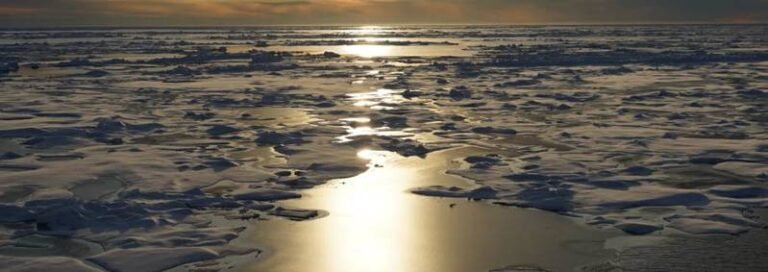The Arctic at +2.7°C Global Warming: A Review of Expected Changes
In 2024, the world witnessed a significant milestone as annual average global air temperatures exceeded 1.5 degrees Celsius above pre-industrial levels for the first time. This marked a turning point, leading to extreme weather events such as record-breaking rainfall and flooding in unexpected areas like the Sahara Desert, along with severe summer heat waves across the globe.
Despite efforts to curb greenhouse gas emissions, current pledges from countries suggest that global temperatures could soar to a staggering 2.7 degrees Celsius beyond pre-industrial levels by the end of the century. The implications of such a temperature rise are dire, particularly for the Arctic region, which is warming at a rate four times faster than the rest of the planet.
The Arctic: A Region in Crisis
A recent review paper published in Science on February 6, 2025, sheds light on the anticipated changes in the Arctic under a scenario of +2.7°C global warming. Titled “Disappearing landscapes: The Arctic at +2.7°C global warming,” the paper was spearheaded by Julienne Stroeve, a senior research scientist at the National Snow and Ice Data Center (NSIDC) and a professor at the Centre for Earth Observation Science at the University of Manitoba.
According to Stroeve, the Arctic is poised to experience unparalleled and cascading impacts at 2.7 degrees Celsius of global warming. These include sea-ice-free Arctic summers, accelerated melting of the Greenland Ice Sheet, widespread permafrost loss, and extreme air temperatures. Such transformations are expected to devastate infrastructure, ecosystems, vulnerable communities, and wildlife in the region.
Anticipated Effects of +2.7°C Warming in the Arctic
- Every day of the year will likely see air temperatures surpassing pre-industrial extremes.
- The Arctic Ocean is projected to be devoid of sea ice for several months annually.
- The portion of the Greenland Ice Sheet experiencing temperatures above 0 degrees Celsius for over a month will quadruple, hastening global sea-level rise.
- Surface-level permafrost is expected to diminish by 50% compared to pre-industrial levels.
Dirk Notz, a professor for polar research at the University of Hamburg and co-author of the study, emphasizes the profound impact of human actions on Arctic landscapes. He urges greater awareness of our collective power and responsibility in shaping the future of the region.
Joining Stroeve and Notz in this endeavor were co-authors Jackie Dawson from the University of Ottawa, Edward A.G. Schuur from Northern Arizona University, Dorthe Dahl-Jensen from the University of Manitoba and University of Copenhagen, and Céline Giesse from the University of Hamburg.
As we confront the stark realities of a rapidly changing climate, it is imperative that we acknowledge the critical role we play in shaping the future of our planet, particularly in vulnerable regions like the Arctic. Only through collective action and informed decision-making can we hope to mitigate the most severe consequences of global warming.

